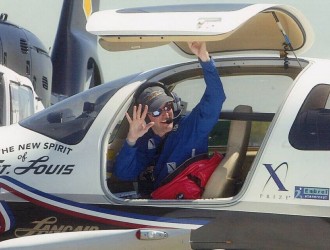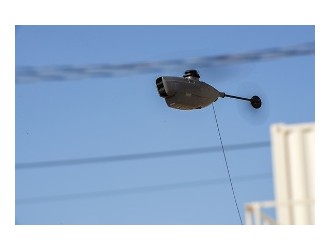
A General Atomics Aeronautical Systems Inc. (GA-ASI) unmanned aircraft system (UAS) — with a max gross takeoff weight of 4,200 pounds and a 160-horsepower diesel engine — recently completed a 41.9-hour endurance flight. Although the drone exceeded its original goal of 40 hours, its endurance does not exceed that of the company’s potentially civil remotely piloted aircraft, which has a greater max gross takeoff weight. In May, that drone performed an endurance flight lasting 48.2 hours.
The MQ-1C Gray Eagle Extended Range (MQ-1C ER) is being developed for the U.S. Army and took its 41.9-hour flight in a representative mission configuration. The MQ-9B SkyGuardian is aimed at integration into the civil airspace by meeting NATO airworthiness requirements for UAS. The SkyGuardian flew an FAA-approved, 275-mile route in the National Airspace in California Aug. 16.
Endurance is a technological hurdle the drone industry must overcome for the civil UAS market to continue developing. A drone in DJI’s Martice 200 series, which has been marketed for law enforcement application among other missions, has a maximum flight time of 38 minutes. Lockheed Martin’s Indago, which is known for its search and rescue capability, can fly for 50 minutes with a 200-gram payload. For missions that require prolonged flight, a helicopter may be a preferred option for some operators.
But some larger drones — developed by companies like GA-ASI, Northrop Grumman and Boeing’s Insitu — have the ability to fly for one or two days. This technology has been, for the most part, fostered by militaries for military operations. U.S. Defense awarded Insitu Aug. 18 some $16.8 million to provide additional parts and supplies to the Navy for its ScanEagle drone. ScanEagle has a wingspan of 10 feet and can fly for more than 24 hours. It has been deployed with the U.S. military since 2004. Insitu announced a partnership Aug. 11 with FireWhat and Esri that allows drones, like ScanEagle, to provide near-real-time wildfire reconnaissance during both day and night operations. Insitu developed its prototype, SeaScanin 2001, before the Boeing partnership. It was originally developed for the commercial fishing industry.
When will the FAA, if ever, completely open the civil airspace to commercial drone operations with long-endurance aircraft? Will the FAA due away with mandatory airspace waivers for those operations? Three UAS industry professionals will weigh in on this topic during the R&WI Rotorcraft Business and Technology Summit next month in Fort Worth, Texas.
"This is an important milestone for the MQ-1C ER program," said David R. Alexander, president of Aircraft Systems for GA-ASI. "The MQ-1C ER represents a significant enhancement in capability over the currently fielded MQ-1C and will be a game changer on the battlefield in support of our Army customer."
The drone’s next step is to complete flight testing in Dugway, Utah, for evaluation of the Army’s First Article Test. Then in January, the aircraft is expected to go through logistics demonstration, followed by follow-on operational test and second evaluation in March. GA-ASI hopes the Army will be able to field the MQ-1C ER in a year.
For the SkyGuardian, the manufacturer said that qualification testing for type certification is set to continue over the next two years.
“This flight is another milestone in our progression toward delivering a [remotely piloted aircraft] system that meets NATO airworthiness requirements for UAS," said Linden Blue, CEO of GA-ASI of SkyGuardian’s flight through civil airspace. "MQ-9B SkyGuardian will be the first [remotely piloted aircraft] system of its kind with a design-assurance level compliant with international type-certification standards, and can therefore be integrated more easily than legacy [remotely piloted aircraft systems] into civil airspace operations around the world."





